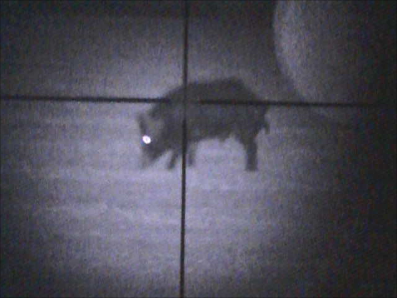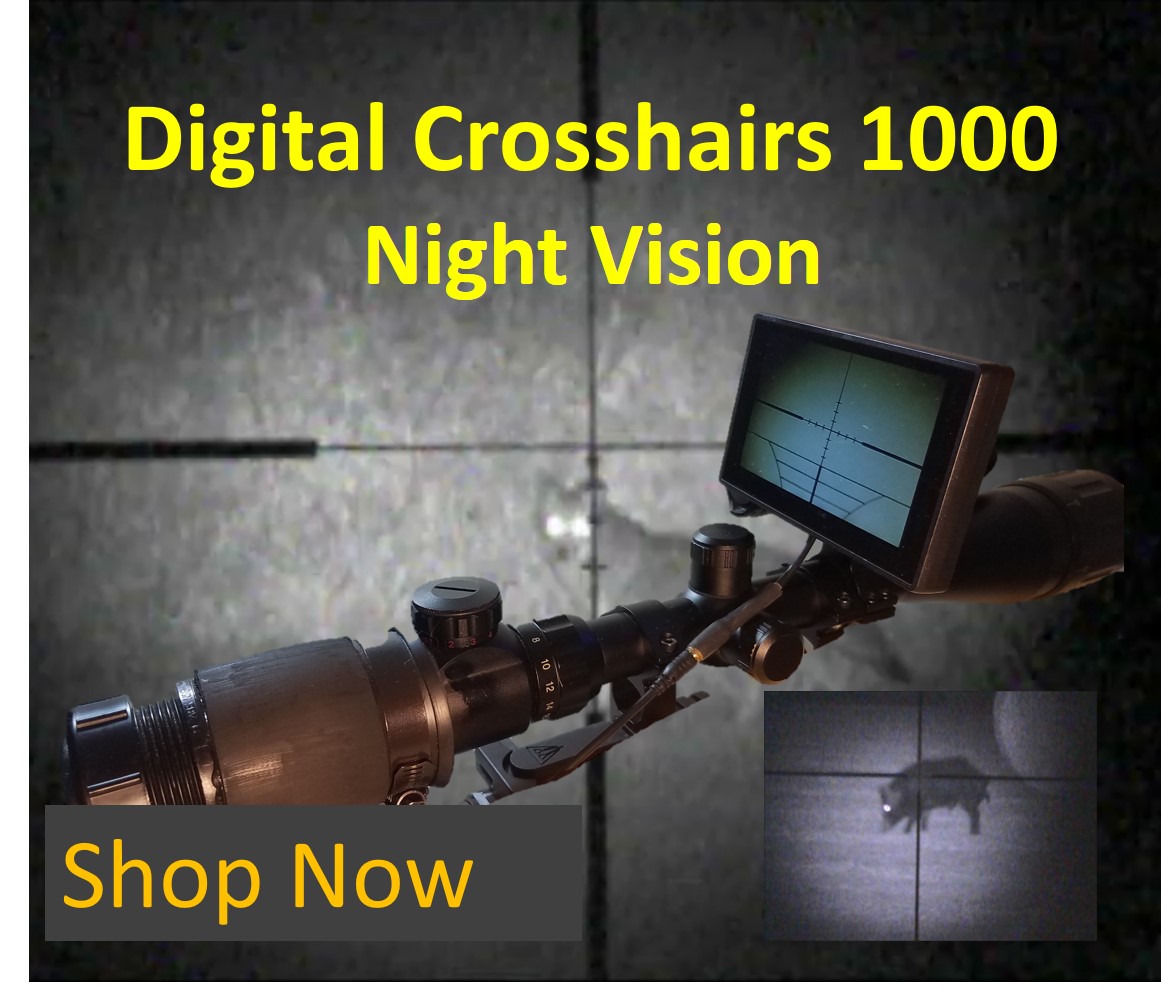Hunting with a night vision scope or night vision clip-on is a great way to hunt hogs, coyote, and other nocturnal predators.
Night vision uses projected invisible IR light that animals and people can not see to brighten up a field for viewing . Many of these systems can see 200+ yards in total darkness. The distance they see is mostly dependent on the power of the IR illuminator used.

Unlike thermal scopes that see heat signatures, night vision scopes see IR and other light that is reflected back into the scope. Reflected back is the key phase here. I was recently hunting a very large peanut field in South Georgia. We used a thermal monocular to scan the field for hogs and spotted a group of them about 500 yards away. That is way too far for the IR night vision on my gun. Remember, night vision sees reflected IR light so in order to see something 500 yards away you would need an IR illuminator that was powerful enough to shine 500 yards. It is possible but would weigh a ton mounted on a rifle so gets impractical. That is why I use a hand held thermal monocular when walk and stalk hunting large fields and need to scan over 200 yards.
Scanning horizontally across a field with night vision is different from looking down at a feeder. It goes back to reflected IR light. When I was standing in that peanut field in the dark, my IR illuminator was reflecting off the ground and peanut plants. Above the peanut plants was 500+ yards of nothing but darkness, nothing at all to reflect back off, that is, until I found the hogs.
So, let me paint the picture. Night vision looking at black hogs in a dark peanut field. Everything from the ground up appeared brightly lite up from the IR. The black hogs gave a good contrast from the bright peanut plants but were less distinguishable from the black background of the horizon above them. If they were white or brown hogs, they would have been much clearer against the dark background.
If I were in a stand looking down at these hogs the background would not be the horizon, it would be the peanuts and soil. A much better contrast. See the difference. If I were standing in the field looking toward a tree lined edge of the field the trees and brush would make a good reflective background to see the hogs versus looking into an open field.
The moral of the story here is, no matter what night vision scope or scope clip-on product you use, the quality of your view will only be as good as your IR illuminator light source.


